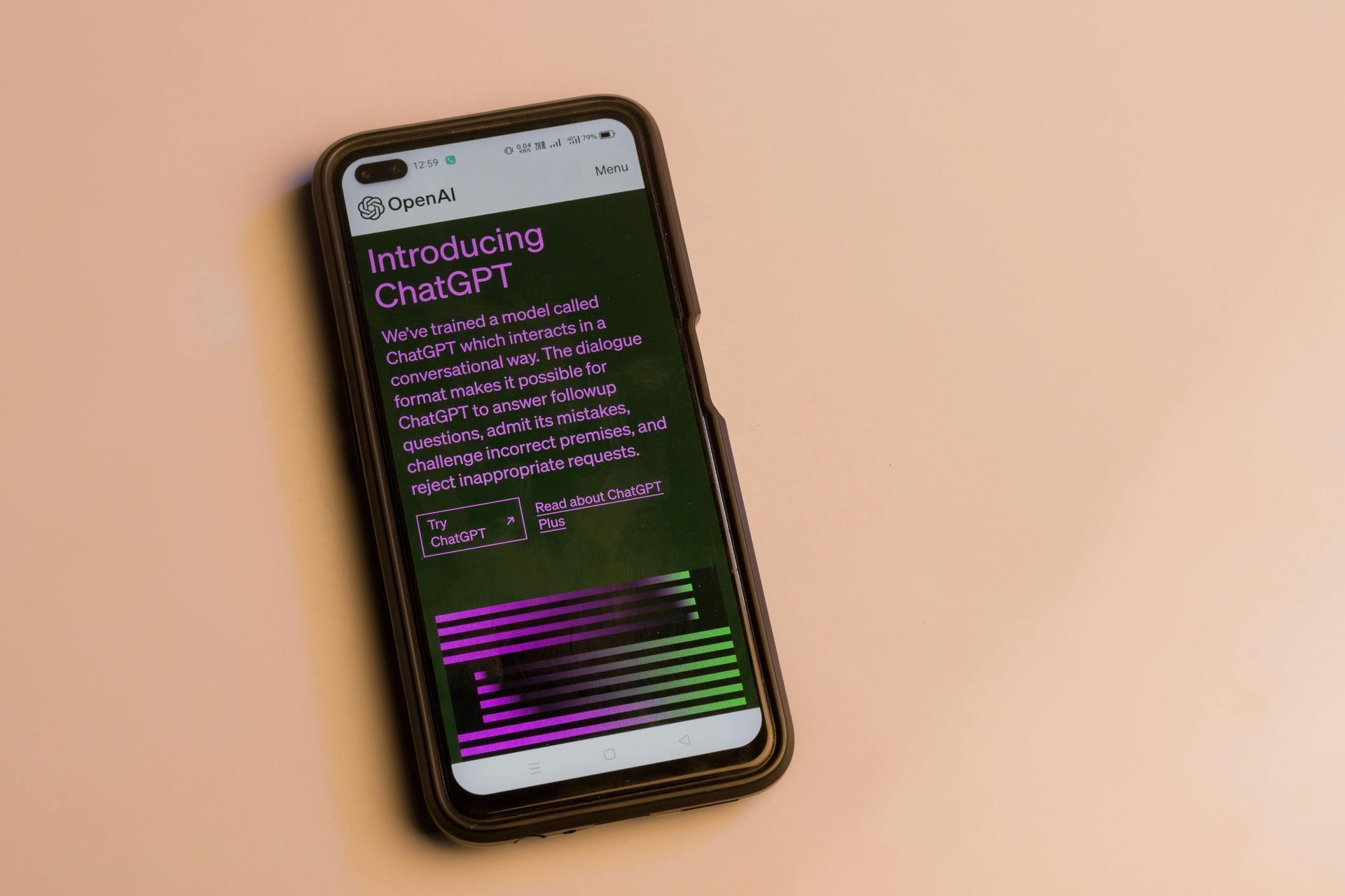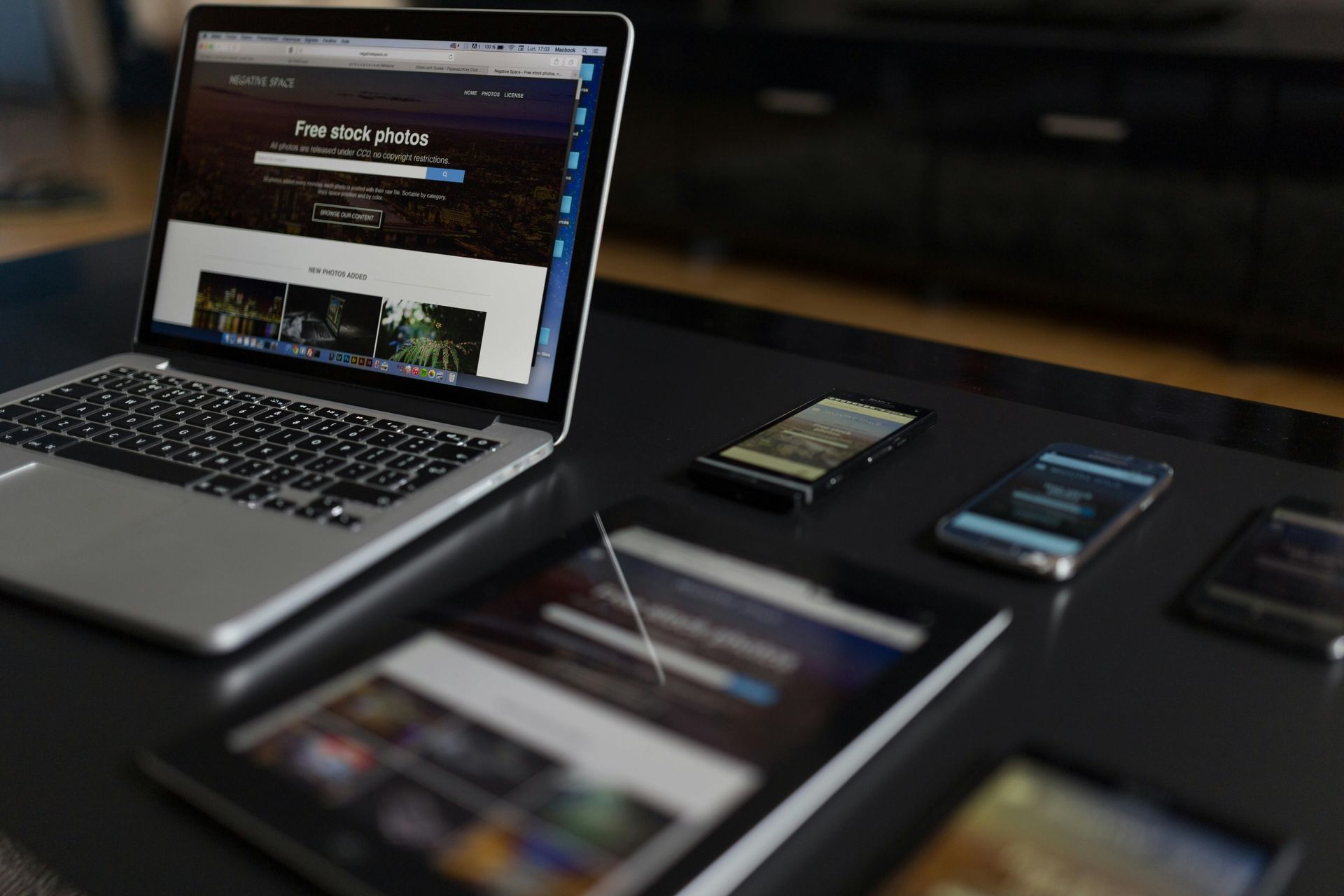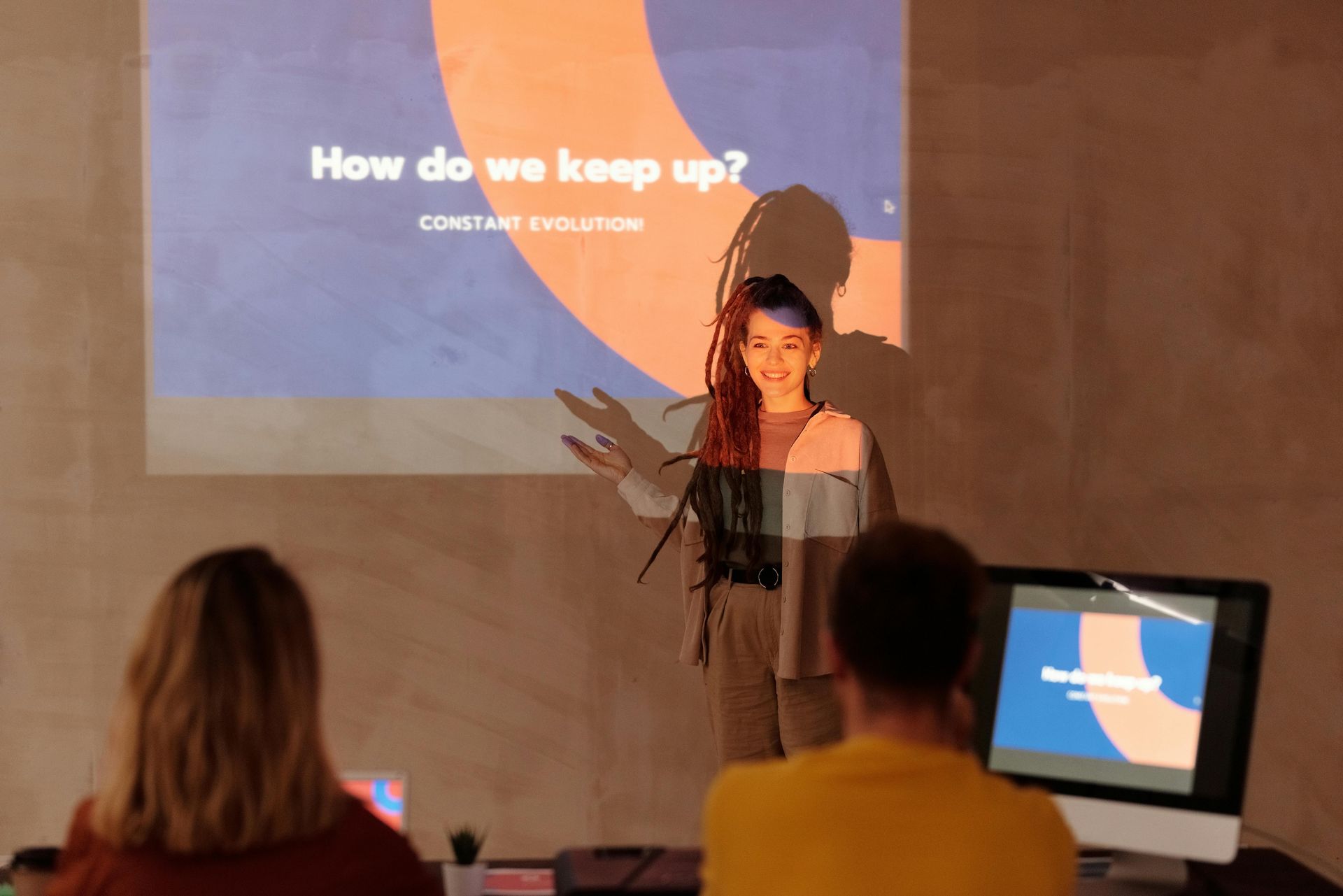Wise musings

The gap between mediocre and exceptional SEO results in 2025 isn't about who has the biggest content budget or the most backlinks—it's about who's asking AI the right questions. While most marketers waste hours generating forgettable content with generic prompts, a select few are using AI as a strategic advisor, uncovering invisible opportunities and content focused on exactly what search engines reward. Most marketers aren't using AI effectively for SEO. They're either too cautious, treating AI as a simple writing tool, or they're too reckless, allowing AI to generate content without strategic direction. The secret lies in crafting intelligent prompts that guide AI to deliver genuinely valuable SEO insights and optimizations. I've spent months refining and testing AI prompts specifically for SEO tasks, and I'm ready to share five unique, powerful prompts that will transform your approach to search optimization. These aren't just prompts for generating generic content — they're strategic tools for uncovering SEO opportunities, analyzing competitive landscapes, and creating content that genuinely serves both search engines and users. Why AI Prompts Matter for Modern SEO Before diving into the prompts, let's acknowledge one truth: AI tools for website SEO are only as good as the instructions they receive. A well-crafted prompt can be the difference between mediocre, generic content and insights that drive meaningful organic traffic. Consider these statistics: 67% ofbusinesses now use AI for content marketing and SEO , with 78% reporting satisfaction with the results A recent survey found that 47% of marketers are implementing AI SEO tools to improve search efficiency Only 35% of marketers feel very confident in evaluating AI solutions , despite 84% being involved in AI purchasing decisions The prompts I'm sharing today address the full spectrum of SEO needs — from keyword research to content gap analysis to technical SEO auditing. Each is designed to produce actionable outputs that integrate seamlessly into your existing SEO workflow. Prompt 1: Semantic Landscape Explorer Purpose: Uncover the full semantic territory around your target keywords, including related concepts, questions, and entities that search engines associate with your topic. You are an advanced semantic SEO specialist analyzing the topic "[YOUR MAIN KEYWORD]". First, identify the core semantic entities Google likely associates with this topic based on current search patterns. For each entity: 1. List 3-5 related long-tail keyword phrases with search intent classification (informational, commercial, navigational, transactional) 2. Identify 2-3 "people also ask" question clusters likely to appear in SERPs 3. Suggest 2-3 related topics that could serve as semantic bridges to expand the topic's relevance Then, analyze the semantic gap by identifying: - Concepts missing from my current content that Google likely expects to see covered - Entity relationships that would strengthen topical authority - Semantic markup opportunities specific to this topic (specific Schema.org types) Format this as a comprehensive semantic map with clear headers and bullet points. Focus on delivering insights that would help create semantically rich content that satisfies both user intent and search engine expectations in 2025. Why this prompt works: Most SEO content fails because it focuses on individual keywords rather than comprehensive topic coverage. This prompt forces AI to think in terms of semantic relationships and entities — the way modern search engines process content. The output gives you a blueprint for creating content with proper semantic depth. Pro tip: For best results, run this prompt against your top-performing page's main keyword and a competitor's equivalent page. The differences in semantic landscapes often reveal immediate content optimization opportunities. Prompt 2: Content Gap Analyzer Purpose: Identify specific content opportunities your competitors are capitalizing on that you're missing, with an emphasis on user intent alignment. You are an expert SEO content strategist. I need you to analyze the likely content gaps between my site and my top competitors targeting "[YOUR KEYWORD FOCUS]". Step 1: Based on current SEO best practices, identify the 5 most probable content topics my competitors are ranking for that I should create or improve. For each topic: - Provide the likely target keyword (including monthly search volume range and keyword difficulty assessment) - Analyze the probable user intent behind these searches - Outline why this content likely performs well (depth, format, media inclusion, etc.) Step 2: For each identified topic, recommend: - An optimized page title (50-60 characters) - A compelling meta description (140-160 characters) that incorporates the target keyword naturally - 3-5 H2 subheadings that would create a comprehensive content structure - Content elements that would enhance user engagement and dwell time (interactive elements, data visualizations, expert quotes, etc.) Step 3: Recommend a content refresh strategy for my existing pages that might compete with these new topics, including: - How to prevent keyword cannibalization - How to interlink the new and existing content effectively - Specific signals of E-E-A-T I should incorporate Present this analysis in a clear, actionable format that prioritizes the highest potential opportunities first based on traffic potential and competitive advantage. Why this prompt works: Generic content gap analysis tools simply show you keywords your competitors rank for that you don't. This prompt takes it further by revealing the structural and intent-based reasons why those content pieces are working, then provides actionable recommendations for creating content that can effectively compete and rank. This prompt is particularly effective for sites struggling to gain traction against larger competitors. The analysis often reveals that competitors are capturing significant traffic with comparison content that addresses specific pain points of their target audience. By creating comparison content with the structured approach suggested by the prompt, you can build content that directly addresses user intent while providing more value than competitor offerings. Pro tip: Run this prompt quarterly against your top three competitors to continually identify emerging content opportunities before they become highly competitive. Prompt 3: Technical SEO Audit Purpose: Uncover likely technical SEO issues affecting your site's performance and provide prioritized remediation steps. You are a technical SEO expert conducting an audit. Based on your knowledge of technical SEO best practices in 2025, help me identify potential issues affecting a [DESCRIBE YOUR SITE TYPE: e-commerce, content publisher, SaaS, etc.] website with approximately [NUMBER] pages. Without accessing my actual site, provide a comprehensive list of the most common technical SEO issues for this type of site, organized by priority (critical, high, medium, low). For each issue: 1. Describe the potential problem in detail 2. Explain how this issue likely impacts search performance specifically for my site type 3. Provide precise detection methodology, including: - Specific tools that can verify this issue (both free and premium) - Exact reports or settings within those tools to use - Red flags or patterns in the data that indicate the problem 4. Provide step-by-step remediation instructions, including: - Technical fixes (with code examples where applicable) - Implementation considerations based on common CMS platforms - How to verify the fix was successful Additionally, create a technical SEO audit checklist specific to my website type that includes: - Weekly maintenance tasks - Monthly audit points - Quarterly deep-dive areas Focus especially on technical factors that influence Core Web Vitals, mobile experience, and crawl efficiency, as these are increasingly critical ranking factors. Why this prompt works: Most technical SEO issues follow predictable patterns based on site type and technology stack. This prompt creates a customized technical audit framework that helps you proactively identify and resolve issues before they impact rankings. The prioritization element ensures you focus on fixes that will deliver the most immediate SEO benefit. This prompt is valuable for brands with complex product catalogs. It often identifies critical rendering issues affecting mobile users that traditional automated audits miss. These types of insights help you focus on high-impact technical fixes that improve both crawl efficiency and user experience—two factors that directly influence search performance. Pro tip: Combine the output from this prompt with actual data from tools like Screaming Frog or Semrush to create a truly comprehensive technical SEO action plan. Prompt 4: User Intent Keyword Classifier Purpose: Move beyond traditional keyword metrics to create a user-intent focused keyword strategy that aligns with how modern search engines evaluate content relevance. You are an SEO keyword strategist specializing in user intent classification. I need you to analyze the following list of keywords related to [YOUR TOPIC] and organize them into a strategic keyword map: [PASTE YOUR KEYWORD LIST HERE] For each keyword: 1. Classify the primary user intent (informational, commercial investigation, transactional, navigational) 2. Identify the content format most likely to satisfy this intent (how-to guide, comparison article, product page, etc.) 3. Estimate the buyer journey stage (awareness, consideration, decision) 4. Suggest one specific content hook or unique angle that would differentiate our content from typical SERP competitors 5. Recommend 2-3 related secondary keywords that should appear in the same piece of content Then, group these keywords into logical content clusters, where each cluster: - Has a clear primary target keyword (highest value opportunity) - Contains semantically related supporting keywords - Addresses a specific user need or question - Can be satisfied by a single piece of comprehensive content Finally, create a content brief outline for the highest-priority cluster, including: - An optimized H1 that addresses user intent clearly - 5-7 essential subtopics (H2s) needed to comprehensively cover the topic - Types of evidence, examples, or data points needed to establish authority - Internal linking opportunities to and from this content Present this as a strategic keyword map that aligns our content creation with both user needs and search engine expectations. Why this prompt works: This prompt transforms a flat list of keywords into a strategic content plan based on user intent and journey stage. It moves beyond simplistic metrics like search volume to consider how well each potential piece of content would serve actual user needs — which is precisely how modern search algorithms evaluate content quality. This approach is effective for B2B brands that have traditionally created content based solely on search volume. By reorganizing content strategy around user intent clusters, companies can create more targeted content that addresses specific pain points at each stage of the buyer journey. This alignment between content and user intent typically results in higher engagement metrics and better conversion rates from organic traffic. Pro tip: Apply this prompt to keywords you already rank for on page two of search results. The intent-focused optimization often provides the clarity needed to push those rankings onto page one. Prompt 5: E-E-A-T Content Enhancer Purpose: Transform existing content to better demonstrate Expertise, Experience, Authority and Trustworthiness — key factors in Google's evaluation of content quality. You are an E-E-A-T optimization specialist. I need you to analyze the following content and recommend specific enhancements to improve its alignment with Google's E-E-A-T guidelines for [YOUR INDUSTRY/NICHE]. [PASTE YOUR CONTENT HERE] Provide specific, actionable recommendations in these categories: 1. Expertise Enhancement: - Identify 3-5 specific points where expert insights or industry data could be added - Suggest credible sources or studies that should be cited (with publication dates from the past 2 years) - Recommend specific credentials or qualifications that should be highlighted if applicable to this topic 2. Experience Signals: - Identify opportunities to incorporate first-hand experience with the subject matter - Suggest 2-3 specific examples, case studies, or practical applications that would demonstrate real-world experience - Recommend ways to showcase problem-solving based on direct experience 3. Authority Strengthening: - Identify potential author byline improvements to establish topical authority - Suggest internal and external linking strategies specific to this content - Recommend additional content elements that would position this as an authoritative resource (comparison tables, original research, expert quotes, etc.) 4. Trustworthiness Improvements: - Identify any claims that require better substantiation or citation - Suggest transparency elements that should be added (methodology explanations, disclosure statements, etc.) - Recommend trust signals specific to this industry that should be incorporated Additionally, provide a before/after example of one paragraph from the content, rewritten to better demonstrate E-E-A-T principles without changing the core message. Format your recommendations as a practical content enhancement plan with clear, implementable steps. Why this prompt works: Google's helpful content system and broader quality evaluations heavily weight E-E-A-T signals. This prompt provides actionable ways to enhance existing content to better demonstrate these critical quality signals. Rather than simply rewriting content, it focuses on substantive improvements that genuinely enhance the content's value and perceived expertise. Pro tip: Apply this prompt to your highest-traffic pages first, as E-E-A-T improvements to already-ranking content often yield the quickest ROI on your optimization efforts. Implementing These Prompts in Your SEO Workflow Having powerful AI prompts is one thing — knowing how to integrate them into your existing SEO process is another. Here's a framework for effectively incorporating these prompts into your workflow: Start with strategy, not content generation Use Prompts 1 and 4 during your keyword research and content planning phase Apply insights to create content briefs before any writing begins Analyze before optimizing Use Prompt 2 to identify content gaps quarterly Apply Prompt 3 for technical audits monthly Regular use of these analytical prompts ensures you're working on the highest-impact SEO opportunities Enhance rather than replace Use Prompt 5 to improve existing content rather than starting from scratch Apply insights from Prompt 1 to expand thin content into comprehensive resources Maintain the human element Use AI outputs as a starting point, not the final product Always validate AI recommendations against your industry knowledge and brand voice Add unique insights, experiences, and perspectives that AI can't generate When properly implemented, these AI prompts for SEO don't replace your expertise — they amplify it. They handle the heavy lifting of data analysis and pattern recognition, freeing you to focus on strategic decision-making and creative implementation. AI Tools for SEO Success The five AI prompts I've shared represent more than just clever ways to use AI for SEO tasks — they embody a philosophy about how AI and human expertise should collaborate in modern SEO strategy. Effective SEO in 2025 isn't about keyword stuffing or manipulating algorithms. It's about deeply understanding user needs, creating genuinely valuable content, and presenting it in ways that both humans and search engines can easily process. These prompts are designed to help you achieve precisely that. I encourage you to adapt these prompts to your specific needs and context. The most powerful prompt is one that's customized to your unique SEO challenges and opportunities. Use these as templates, not rigid scripts, and continually refine them based on the results they deliver. As AI tools for SEO continue to evolve, the competitive advantage will go to those who can craft the most effective prompts — those who know how to ask the right questions to get the most valuable insights. Master this skill, and you'll be well-positioned to stay ahead in the ever-changing landscape of search engine optimization. What AI prompts have you found most effective for your SEO strategy? Share your experiences, or reach out to discuss how these prompts might be adapted for your specific industry challenges.

Programmatic advertising – the automated, data-driven approach to buying and placing advertisements – is shaping the conversation around and future of promotional strategies. Marketers need to stay informed about its trends, technologies, and potential to maintain an edge as they promote their businesses and clients. Let’s break down the elements of programmatic advertising and discuss ways in which to optimize campaigns. Artificial Intelligence and Machine Learning Artificial Intelligence (AI) and Machine Learning (ML) are at the forefront of the future of programmatic advertising and are currently developing at impressive speed. These technologies enable precise targeting and personalization, allowing marketers to tailor their campaigns to individual preferences and behaviors. AI and ML can analyze vast amounts of data, predict consumer actions, and optimize advertising strategies in real time. Learning about and investing in AI-powered tools is quickly becoming necessary to stay relevant and ensure tailored advertisements reach the right audience at the right time. Cross-Channel Integration Programmatic advertising will continue to integrate seamlessly across various digital channels. Focus on strategies that synchronize advertising efforts across platforms like social media, display ads, video, and mobile apps. This approach provides a cohesive brand experience and maximizes audience reach. Cross-channel integration also allows for a unified view of consumer behavior, enabling marketers to refine campaigns for optimal results. Improved Data Privacy and Compliance Data privacy and compliance with regulations like the European Union’s GDPR (General Data Protection Regulation) and California’s CCPA (California Consumer Privacy Act) are critical aspects of programmatic advertising's future. It’s important to prioritize ethical data collection and usage, ensuring the processes adhere to legal frameworks. Implementing strict data privacy measures not only builds trust with consumers but also mitigates the risk of hefty fines and reputational damage. First-Party Data and Contextual Targeting The reliance on third-party cookies is dwindling, and marketers are shifting their focus to first-party data and contextual targeting. First-party data is collected directly from customers, providing valuable insights into their preferences and behaviors. Contextual targeting leverages the content and context of a webpage to serve relevant advertisements. This is where investing in building and leveraging first-party data is imperative, as it allows companies to create personalized, contextually relevant ad experiences for their customers. Blockchain for Transparency and Security Blockchain is a shared, unalterable database containing records of transactions and assets in a business network. It can track orders, payments, accounts, and more, giving members access to the details of a transaction from end to end. This technology offers transparency, security, and trust in programmatic advertising, ensuring advertisers and publishers can trace the flow of ad impressions and verify data authenticity. Adopting blockchain helps combat ad fraud and enhances trust in the advertising ecosystem. Dynamic Creative Optimization (DCO) Dynamic Creative Optimization (DCO) allows marketers to personalize ad creatives based on various data points such as location, device, and user behavior. This technology uses information to design campaigns in real time, ensuring that each user sees a tailored ad, increasing engagement and conversion rates. Embracing DCO enhances the relevance and effectiveness of advertisements. Influencer Marketing in Programmatic Advertising Influencer marketing is also becoming more integrated with programmatic advertising. By leveraging programmatic tools, marketers can identify and collaborate with influencers whose audience aligns with their target demographic. This merger enhances the efficiency and impact of influencer campaigns, amplifying reach and engagement. Adapting to emerging technologies in order to provide an engaging experience to consumers is part of a marketer’s journey. The future of programmatic advertising is dynamic and promising, and staying informed about this tool and incorporating it into marketing strategies will be instrumental in navigating the ever-evolving advertising landscape successfully.

When we say “Where’s the Beef?” What do you think of? Probably the classic Wendy’s campaign from the 1980s. Or how about Clydesdales playing football? You (hopefully) think of Budweiser. Humor is a global element that cuts through boundaries of culture, age, and gender, and fosters profound, emotional connections. Used correctly, it gets people talking, makes businesses memorable, and creates favorable associations with viewers. Let’s look at some helpful tips for including humor in your own advertising. Know Your Audience Understanding your target demographic in depth is the key to effective comedy in advertising. What makes them laugh out loud? What are their pain points? Make sure your humor speaks to their issues, values, and interests. For example, if you want to sell to tech-savvy millennials, clever humor using internet memes might be the way to go. On the other hand, a more subtle, conventional approach might be more successful if your audience is older and more traditional. Be Authentic When using comedy in advertising, authenticity is crucial. Insincerity can be easily detected by audiences and harm your brand's reputation. Make sure your comedy fits with the personality, values, and overarching messaging of your company. Humor can help you stand out in a congested market. Keep it Relevant and Timely Successful comedy in advertising (and usually in general) depends on being timely and relevant. Your advertisement may be more relatable and interesting if you relate your humor to current affairs, popular culture, or other relevant topics. For instance, when the lights in the stadium went out during the 2013 Super Bowl, Oreo capitalized on the occasion on Twitter (now X). "Power out? ", stated the tweet. “No issue. Even in the dark, you can still dunk.” This witty reaction not only attracted attention, but it also demonstrated Oreo's ability to react to a live event quickly. Strike a Balance While comedy can be an effective marketing technique, it's important to maintain balance. Do not overuse humor in your advertisement to the point where the call-to-action or message is obscured. The humor in the advertisement should support, not take away from, its main message. For instance, Geico's well-known "Gecko" advertising campaign strikes a mix between fun and spreading the word about insurance discounts. In addition to engaging viewers, the character's clever repartee and amusing circumstances successfully communicate the brand's value. Test, test, and test again Testing and iteration are essential to hone your use of comedy in advertising, as with any other marketing tactic. To gauge the reaction of the audience, conduct focus groups, collect feedback, and monitor analytics. Analyze the forms of comedy that your target audience finds most appealing, and change your technique as necessary. Keep an open mind about changing your strategy as time goes on. What is humorous today could not be as funny tomorrow, because comedy trends change. Keep an eye out for cultural shifts and be open to modifying your strategy to ensure your advertising is current and effective. Using humor engages people in a positive way and leaves them feeling good about your brand. Increase the success of your advertising by knowing your audience, remaining real, staying current, striking a balance, and continuously testing and refining your strategy. Keep in mind that a well-placed joke can make a lasting impression and distinguish your business in a crowded market.

The process of building a new website might sound relatively simple - give a designer some text and images, position a few key calls-to-action, hand it off to a web developer and release it to the world. But, if you want a website that works for you (instead of only being more work), and brings value to your organization, consider these 7 things that can’t be skipped during your website project. Prioritizing Goals and KPIs If you don’t set goals for your website, you won’t know if it is serving your needs and the needs of its visitors. And, without KPIs, you won’t have an easy way to measure your progress towards those goals. Also, simply having goals isn’t enough - they need to be prioritized. Cost and time will always limit what can be achieved, so knowing the most important goals for your website will help you stay laser focused when deciding what needs to be done and what can wait. One question we often ask our clients is “Why do you need a new website?”, and someone who has defined goals and KPIs will have no problem quickly giving an answer. To help define and prioritize your website’s goals and KPIs, try answering the following questions: What isn’t working with your current website? What are your current metrics? What are the highest priority goals? How do you know if they’ve been achieved (what are the quantifiable goal values)? Describing Personas It’s easy to forget who exactly a new website is being built for - the visitors! But, who are your visitors? Describing visitors as personas , (hypothetical visitors), helps identify the traits, demographics, and goals of those visitors. Most websites will have a handful of key personas to support and each should be distinct enough that you will need different approaches to align their goals for visiting the site with your own for building it. To better understand what your site’s visitor personas look like, try answering the following questions: Who is your current target audience(s)? Is anyone missing from that? What are they looking for and how can your site help them? Designing a Visual Sitemap A visual sitemap is an important prerequisite for creating a website. Without it, identifying all the pages (and URLs) of a site can be very difficult. A visual sitemap also gives a good indication of where the priorities (and complexity) of a site’s content is. It can also be a good way to show how an organization thinks about their business and how that aligns with how visitors want to engage with the content of the website. Creating a sitemap is often an iterative process involving many stakeholders. After creating the first draft, ask these questions to help refine it: How is information or navigation structured in your site (deep vs wide)? Does the site structure reflect your priorities? Does the sitemap support your user journeys? Curating Content Having a sitemap isn’t enough to create a website. You’ll need content to fill the site’s pages and give visitors a reason to come to your site. Typically, content managers will work with stakeholders to collect content, edit it and identify the structure of the content that needs to be presented on the site’s pages. It can be tempting to just start creating pages in a site and pasting content in from various sources in an organization, but content curation will give everyone an opportunity to validate that the information is correct and expresses the right message to visitors. Through the curation process, content managers will be able to identify what content is unique across a site and what should be centrally managed and reused. Using a robust Digital Experience Platform makes this content governance possible. Approving Wireframes and Designs With the content defined, wireframes can be created. Wireframes are the blueprints of the structure of a page, combining content with presentational layout. While they should include real content, they should limit the inclusion of design. A website’s wireframes should account for the unique variations of content types (ex: a product page vs a promotional marketing page) and the various devices a website could be viewed on, as well as any possible accessibility issues. Once wireframes are approved, designers can begin the design process for a website (creating high fidelity mockups ). They combine brand guidelines, wireframes, and content, ensuring a consistent look and user experience. People often want to start building a website with the design because it’s an easy way to get creative inspiration. But this can have negative effects because it encourages trying to fit the sitemap, content, and wireframes to the design. Aiming for Accessibility Web accessibility is, unfortunately, an afterthought for many projects. There are legal requirements for websites to serve those with disabilities, but these requirements are not the only reason accessibility should be prioritized for your website. The way that a search engine crawler navigates and consumes content on a website isn’t that different from the way someone with a visual impairment would, because a search engine crawler has no visual capabilities. If you want to improve SEO, consider optimizing your site for accessibility. Accessibility doesn’t only cover physical impairments, it also addresses situational impairments. If a visitor to your site has a weak or intermittent network connection when browsing your site on their phone, the website should still offer them a usable experience. The experience of the site visitor, as indicated by page loading performance, influences search rankings, so accommodating situational impairments will help a site rank higher in search results. Accessible websites are, by definition, websites that enable visitors to use different methods of navigation and interaction. They support more devices and content consumption use-cases than non-accessible websites. This means they will be more likely to support new devices and technologies in the future. If a screen reader can effectively interact with your site, then it’s likely that an AI assistant could as well. New device form factors, like low-powered electronics, phones with foldable screens, and smart home devices with touch screen displays will be more likely to provide great experiences on an accessible website than one built without prioritizing accessibility. Defining A Project Scope and Plan Everything mentioned so far sets the foundation for building a website and is often part of a project discovery process. Once that discovery is complete, work can begin on building the website and loading in content. However, a successful project discovery should also generate a project scope and a project plan. The project scope is the “definition of done”, or what needs to be accomplished to reach the finish line. Without it, it can be very difficult (or impossible) to know if everything has been accounted for when building a website. Without a scope, it also becomes easier for scope creep to impact a project without adjusting timelines or cost. The project plan details the ideal timeline for accomplishing the items outlined in the project scope. A project plan should be flexible enough to adjust to the complexities of business (ex: change in scope) and life (ex: paternity leave for a lead stakeholder) and the delays they incur. These changes will be reflected in the timeline of the plan, helping stakeholders concretely understand their impact. A project plan also helps identify areas of the scope that are complex or uncertain by including additional research or discovery time. Stakeholders and those building a website can then keep an eye on these parts of the website build and ensure progress stays on track.

There’s no shortage of resources that wax poetic about the benefits of marketing automation. While there’s no doubt that creating a more customized, personalized path for your audience is a game changer, there’s little reference to another topic -- the challenge of building your marketing automation strategy. Setting your automation strategy in motion doesn’t happen until there’s a foundation and infrastructure in place to feed and support it. That means your initial focus should be thinking through the key challenges that are inherent to any marketing automation plan and figuring out upfront how you’re going to tackle them. In this post, I’ll share three key challenges in marketing automation that are most likely to slow you down -- and explain why you need to think through each to ensure future success. Getting personal One of the biggest reasons for adopting a marketing automation strategy is the ability to create a more personalized experience for your audience. Having a more empathetic approach shows prospects and existing customers that their needs are understood. And if your messaging is executed correctly, it positions a business to deliver value to those needs. To marketers, this idea isn’t new. But I’m betting most businesses haven’t taken the time to map out the pains, frustrations and motivations of their target audiences. For brands looking to get the most out of their marketing automation, there needs to be time and resources devoted to sufficiently understanding who you’re talking to. There are likely multiple decision makers that you’ll need to account for. Our team has worked with clients targeting as many as six different personas -- and it’s possible that you’ll need to target even more. Skills and know how Not-so fun fact: One-third of organizations that have a marketing automation platform aren’t using it. The problem is that businesses tend to underestimate the skills, resources and time that are required to build and maintain an effective marketing automation strategy. Marketing automation platforms provide the tools and capabilities to generate and nurture leads, but none of it happens without developing the strategic and technical know-how inside your business. This leads us to the crux of the challenge: Does your organization have the patience to develop an in-house specialist who understands lead scoring, sales enablement and setting up different types of marketing automation? If not, it’s vital that you consider where that level of support and skill will come from. Some marketing automation platforms offer better support and education than others, but managed services can alleviate your team from potential heartache. Creating engaging content Every marketing automation campaign depends on engaging content. The challenge -- especially if you’re targeting multiple decision makers -- is that a personalized, customer-inspired approach calls for a huge amount of content. Take, for example, an email campaign that is designed to encourage a CFO to schedule a call with a member of your sales team. Any CFO has specific needs, and likely isn’t looking for the same things in a product or solution as your target’s CEO or CMO. That means you’ll need to craft a series of emails that is unique to the CFO -- being mindful to address all the pain points and needs that you identified when taking stock of what they value. Of course, it won’t be enough to simply send messages without positioning yourself and brand as an expert who can resolve their problems. So to support your efforts, you’ll need to have blogs, case studies, videos and other types of content to entice your target. Now multiply that by the number of stakeholders that you’re aiming to reach. There are strategies to help repurpose and minimize the amount of content needed to support your marketing automation plan, but it’s also fair to say that writing one blog post per month isn’t going to get you to where you need to be. Expect there to be a need for a lot of content upfront. And even after the foundation is in place, you can count on your marketing automation plan requiring a steady cadence of content as you adjust your strategy to meet the evolving needs of your audience. How to Tackle the Challenges Here’s the thing: Your marketing automation platform isn’t going to manage itself. If your team will be responsible for running marketing automation campaigns, start with an honest assessment of your team’s skills, resources and time. It can take between six to nine months to build and begin executing your plan without the right support. Make sure you’ve got the specialists that you need from the onset -- and if you don’t have them, find a team that can fill those gaps.





